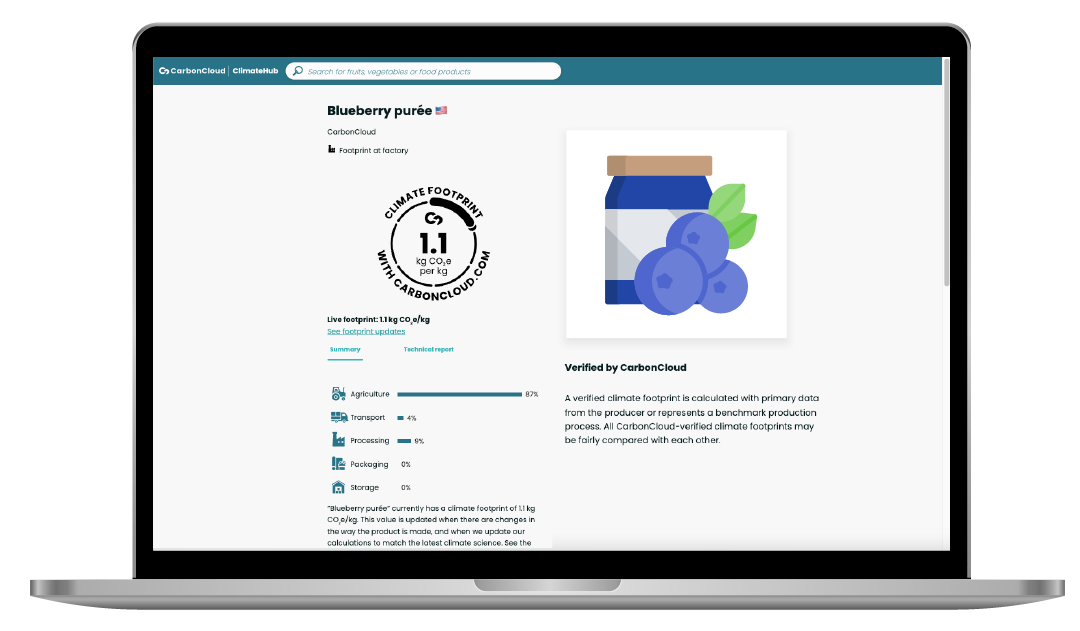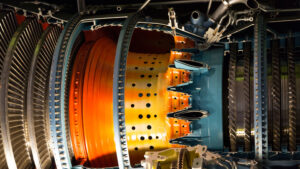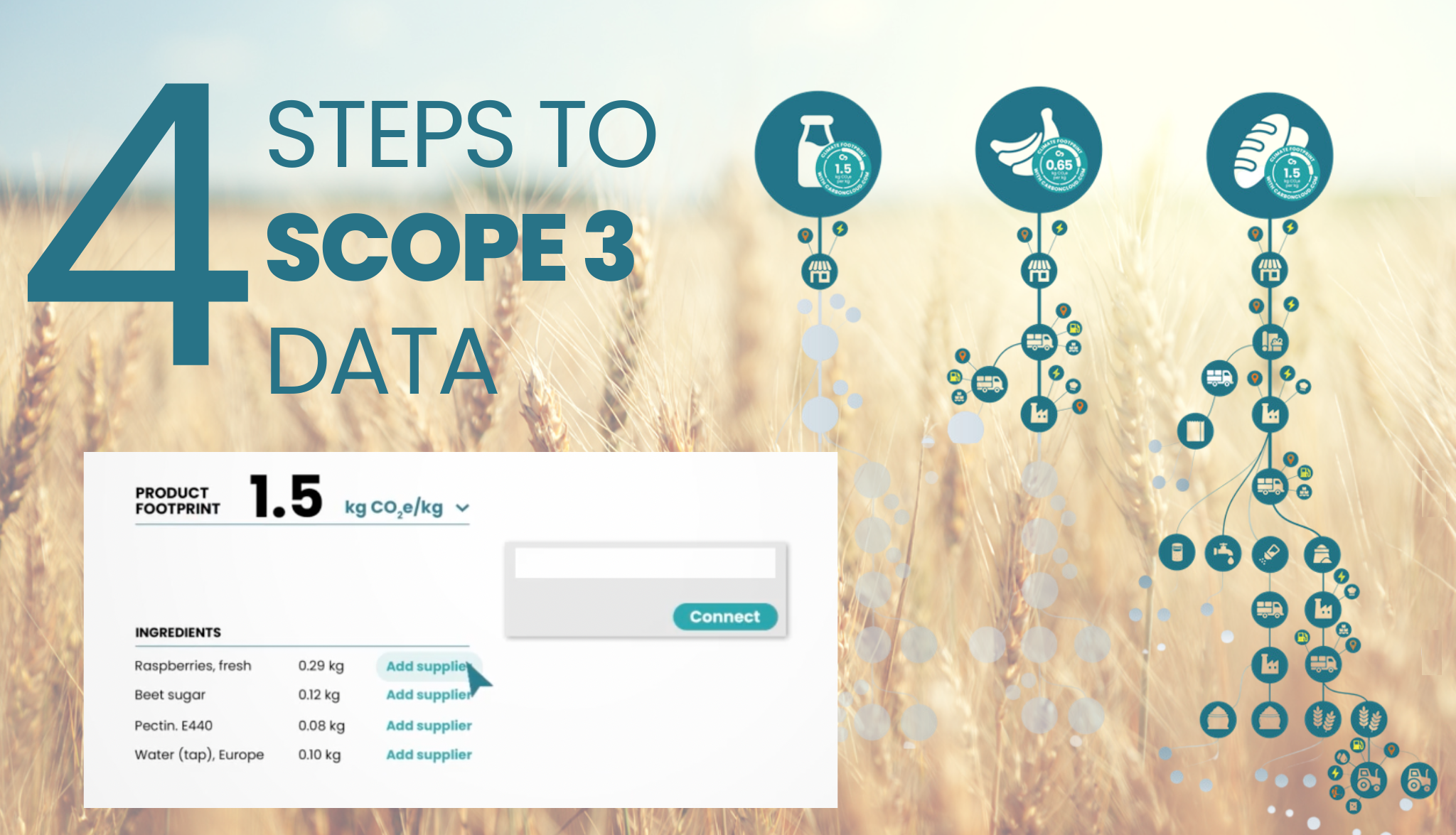Why CarbonCloud? Automated Modeling
AUTOMATED MODELING
Not busy enough? Go looking for faster and more accurate climate footprint calculations
(We're just kidding. We want you to succeed.)
What is Automated Modeling?
Automated Modeling is CarbonCloud’s climate footprint calculation engine for large food portfolios. Automated Modeling automatically maps out the supply chain and calculates the climate footprint of thousands of products in days, with minimal input from you.
Is the Automated Modeling engine credible?
CarbonCloud is a combination of a climate calculator (LCA tool), a supply chain management system, and a database. Every product assessed and published on the platform is available on the platform as an ingredient for other production processes. Everything with market-leading consistency and detail.
At the foundation is the agricultural engine (based on 2019 IPCC guidelines) that calculates the climate performance for agricultural products at farm gate. It comes pre-populated with production system data for close to every commercially grown crop from every country in the world where it is grown. They are all consistently calculated based on the best available data for yields, fertilization, soil types, climate zones, etc.
On top of this, there are thousands of modules for refinement processes and semi-refined products, fuel types, country-specific electricity, and a vast dataset of benchmark products at store shelf.
The data counts in the tens of thousands and is rapidly growing, as CarbonCloud continuously develop the dataset and increase its resolution, and via increasing numbers of farmers, B2B producers and B2c producers joining the platform. All this data is available for users of the platform and a large share of the data is openly available at ClimateHub.
Each footprint is based on input data from high-quality sources. The data available on the CarbonCloud platform mainly derives from three origins:
- Statistics and data from national and international agencies for example the Food and Agriculture Organization of United Nations or the National Inventory of Submissions of the UNFCCC.
- Relevant scientific literature: if the process ingredients are modeled, we utilize extensive scientific literature which our in-house science team reviews and adapts accordingly.
- User input: the platform learns as users feed production system data into it.
Our calculations and methodology are compatible with ISO 14067 and GHG protocol Product Life Cycle Accounting and Reporting Standard, which are the current standards for LCA studies.
What data do you require to get started with Automated Modeling?
As a starting point to do the initial mapping of your product portfolio, we would ask for the following information on your products:
– Product name
– Bill of Material
– Production location, at least country
– Market where the products are sold
– Packaging material(s)
There is a long list of information that will increase resolution and accuracy, but a relatively short list will do most of the work.
CarbonCloud never asks for GHG emissions for any process. For consistency, all emissions are calculated by the platform. All questions relate to production processes with a focus on readily available information to the producers and suppliers. You don’t need to dive deep into the science or methodology to get the climate footprints of your portfolio. You instantly get the richness of immediate insights while feeding in the data and working on the platform. Everyone quickly becomes a climate expert on their part of the business.
What happens after my company provides the data?
CarbonCloud runs your data through a machine learning algorithm, together with the platform’s library of ingredients, production processes, transport modules, etc., to map out representative supply chains for every ingredient and product. At this stage, your company gets complete and consistent scope 1+2+3 mapping for your portfolio, accompanied by a breakdown per product and per stage in the value chain.
Granularity and precision depend on the amount of information available at the time of the mapping. The insights from Automated mapping will guide the users of the platform as to how best to proceed: Which additional data to collect to increase resolution where it matters the most, which products to focus efforts on, and which suppliers to engage for the highest ROI relating to actionable insights and data.
How is Automated Modeling different?
Automated Modeling is unique in its value in 3 different domains:
• Food & beverage industry
Users of Automated Modeling can get their hands on the most accurate and actionable emissions baseline digital technology can provide in a matter of days. The results of Automated Modeling enable food industry players to solve their most pressing emissions problem: Map out emissions throughout the supply chain, orchestrate supplier engagement, and automate Scope 3 primary data input. Users can unlock the automatically modeled digital twin of every product and jump straight into enhancing the climate footprint fidelity. Automated Mapping is the fastest way to start with meaningful reductions in the food supply chain.
• Life cycle assessment
To this day, LCA studies require a hefty penny, a time-consuming hunt for activity data, and way too many methodological decisions to be made. All that to produce climate footprint results that are valid for a year maximum and cannot be compared to the results of a LCA with different methodological decisions. Automated Modeling redefines how LCAs are done with dynamic, always up-to-date climate footprints and inaugurates a new era where what matters is not having a result but what you can do to improve this result.
- Technology
The technological components in Automated Modeling are the flagship of CarbonCloud’s innovative spirit and pragmaticism. It combines a cutting-edge product classifier and modeling engine and applies this rapid identifying and modeling technology to CarbonCloud’s accumulated knowledge: Our climate footprint library of thousands of data points.
Automated Mapping is the fastest way to start with meaningful reductions in the food supply chain.
Automated Modeling Q&A
Mikael Tönnberg, CarbonCloud's CTO and co-founder, gives an A to every Q you may have about Automated Modeling.
What problems does Automated Modeling solve?
Well begun is half done. But in the challenge of data-driven emissions in the food supply chain, the food industry cannot even begin solving it without the map of supply chain emissions. Automated Modeling provides precisely that digital map that propelled the food industry to half-done. Users can locate their emissions with precision, find focus in reaching their climate targets, prioritize suppliers and get to the deep end of the supply chain in a systematic and automated way.
Automated Modeling solves another, more understated issue around food emissions: It moves the needle from “How do we measure the emissions of this product?” to “How do we reduce the emissions of our product portfolio?“. Automated Modeling does that by providing holistic, actionable, comparable climate information fast, regardless of portfolio sizes.
The engine visualizes and maps out information to scale – add primary data, engage suppliers, and pinpoint reduction opportunities with increasingly high definition. Automated Mapping is the data-driven launchpad of a sophisticated climate strategy that moves your organization from discussing reduction opportunities to leveraging them.
GETTING THE MOST OUT OF AUTOMATED MODELING
Sysco Subsidiary Menigo applies CarbonCloud to 23,000 products
Menigo, Sysco's Nordic wholesaler subsidiary calculated its baseline, mapped out supply chain emissions for 23,000 products in two weeks, and is on-track to automate Scope 3 engagement throughout its network of suppliers.
The data from CarbonCloud allows us to focus on the things that truly matter. Now we want to collaborate with our suppliers and customers to reduce our climate impact together.

Jonas Köhler
CEO at MenigoWhat else makes CarbonCloud special?
Network
A true-digital solution to supplier engagement & Scope 3 data
Comparability
Calculating all climate footprints with fairness and integrity
This shan't take long...
Ready to meet your portfolio emissions? Let us automate it
Getting started is hard – Simplify it with Automated Modeling and jump straight to the action. Reach out to our climate performance experts and see how you can jumpstart your climate strategy.
Automated Modeling or How the food industry stopped the LCA and loved machine learning
Here are the facts:
– In 1969, Life Cycle Assessment was born, measuring the climate impact of the CocaCola packaging. 53 years later, little has changed: The food industry is still neck-deep in measuring emissions, barely dipping its toes in managing them.
– Since 1969, the tech industry has perfected the measuring machine that runs en masse calculations automatically – better and faster than humans ever could.
– In 2020, the CarbonCloud canvas inscribed the science of measuring climate impact in this machine. The food industry could finally calculate the climate impact of a product without getting buried under a mountain of science. But there was more to be done.
– In 2022, CarbonCloud introduces the software solution for measuring emissions at scale and offers it to the hands of the food industry: Automated Modeling concludes the problem of measuring and opens the chapter of managing emissions.
And here is the story: To measure the climate impact of a single food product for a year with a life cycle assessment, you would need six months, $50,000, a specialist, and an extensive set of data begging to be gathered, spread over tens of suppliers. Now imagine the demand for a portfolio of 1,000 products. How does the food industry allow this amount of time, money, and brainpower for a questionable, static result?
Food industry, meet computers and machine learning. Their strongest suit is doing these exact calculations cheaper, quicker, better, and for hundreds of items at once. Perhaps, handing over the calculations to them would give you back the agency to remember why you started measuring emissions in the first place: To manage them. Perhaps the agency and resources saved from handing over all the measuring can go into managing and reducing emissions instead.
CarbonCloud proudly presents Automated Modeling, the technology that inaugurates the era of emissions management for food. Automated Modeling is the outcome of computers doing what they do better than humans: Lightning-speed faultless calculations at scale and automating manual labor. Automated Modeling automates the paralyzing task of gathering data throughout the food supply chain and measuring them so that the 2 billion people in the food industry can focus on what they do better than computers: Use insights to strategize.
When we launched the first CarbonCloud interface we improved the speed, consistency and accuracy of life cycle assessments by more than a factor 10X. With the launch of Automated Modeling, we leave even that solution in the dust. Automated Modeling feels like magic. This is a revolution for the decision-makers in the food industry combating climate change.
David Bryngelsson, PhD, CEO & Founder at CarbonCloud
Hundreds of real-time, high-accuracy climate footprints within days are merely the tip of the iceberg. The magic lies in the remaining 90%: a complete model of the supply chain for every product. Food producers can get started with readily available data they use daily: product names, ingredient list, and country of origin. A Natural Language Processing machine scans portfolios with thousands of products and programmatically matches each product to its supply chain model.
Powered by a high-definition map of the food system, the most comprehensive climate footprint dataset, an advanced logistics module, and a sweeping library of refinement processes, Automated Modeling architects the full map and supply chain of every product: Production processes, logistics chains, and supplier networks – with the same and higher accuracy and granularity as month-long LCAs.
Automated Modeling marks the tipping point of climate strategies, from the era of calculating emissions to the era of reducing emissions – impactfully and efficiently. It is a singular opportunity for the food industry to focus their climate efforts on what matters for their portfolio, to design and march on their climate strategy roadmap quicker than ever.
Ready to meet Automated Modeling & start managing your emissions?
If you are the “I’ll believe when I see it” type, we’d be thrilled to take up the challenge!
Related Posts
Explorer–Navigator–Trailblazer: Product packages with a story
You are casually browsing through the CarbonCloud website, you find some interesting stuff and you decide the check the Product packages page. Or, you are
Cérélia: High experience standards, one recipe switch, and a 30% reduced climate footprint
Cérélia is a global leader in fresh dough and ready-to-eat pancakes headquartered in France but expanding globally, in both production and distribution. Cérélia has 12
Climate transparency in food supply chains: The biggest need since sliced bread?
For a third year in 2022, climate action failure takes the top spot as the highest- concerning risk in the World Economic Forum’s Global Risk
4 steps to Scope 3 data: Roadblocks & how to overcome them
Food & beverage industry + Emissions + Elephant in the room = Supply chain data. Upstream Scope 3 data is a problem the entire food










